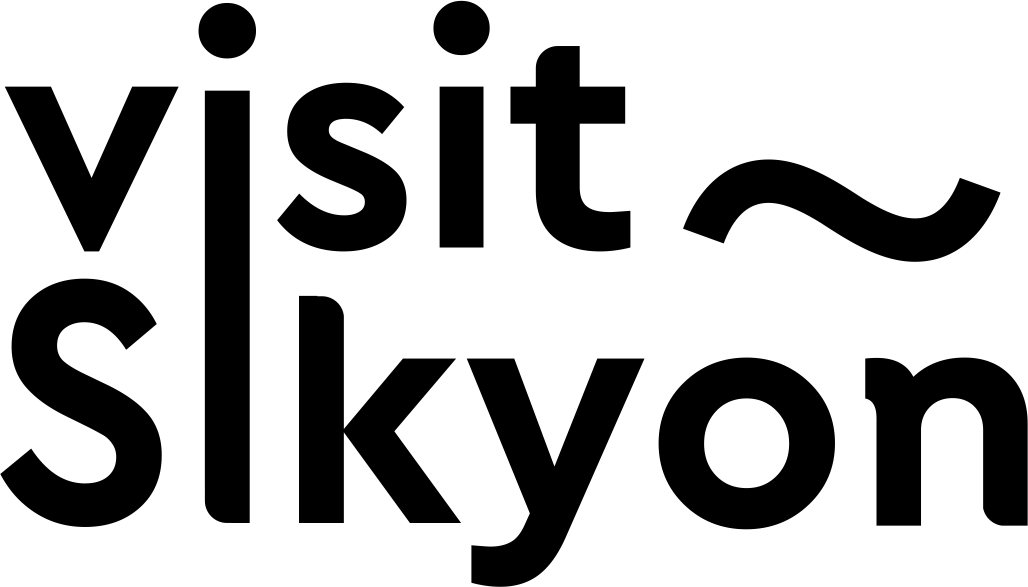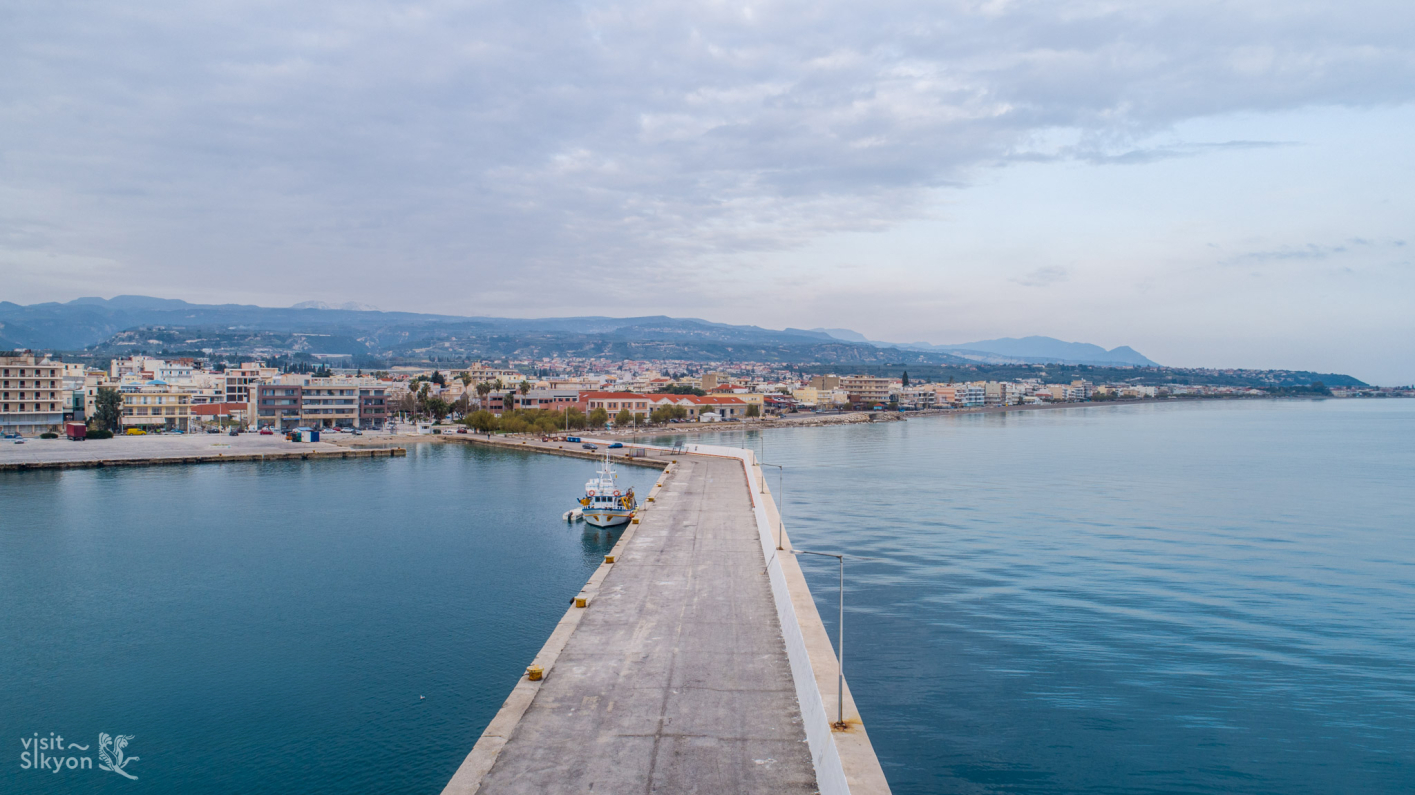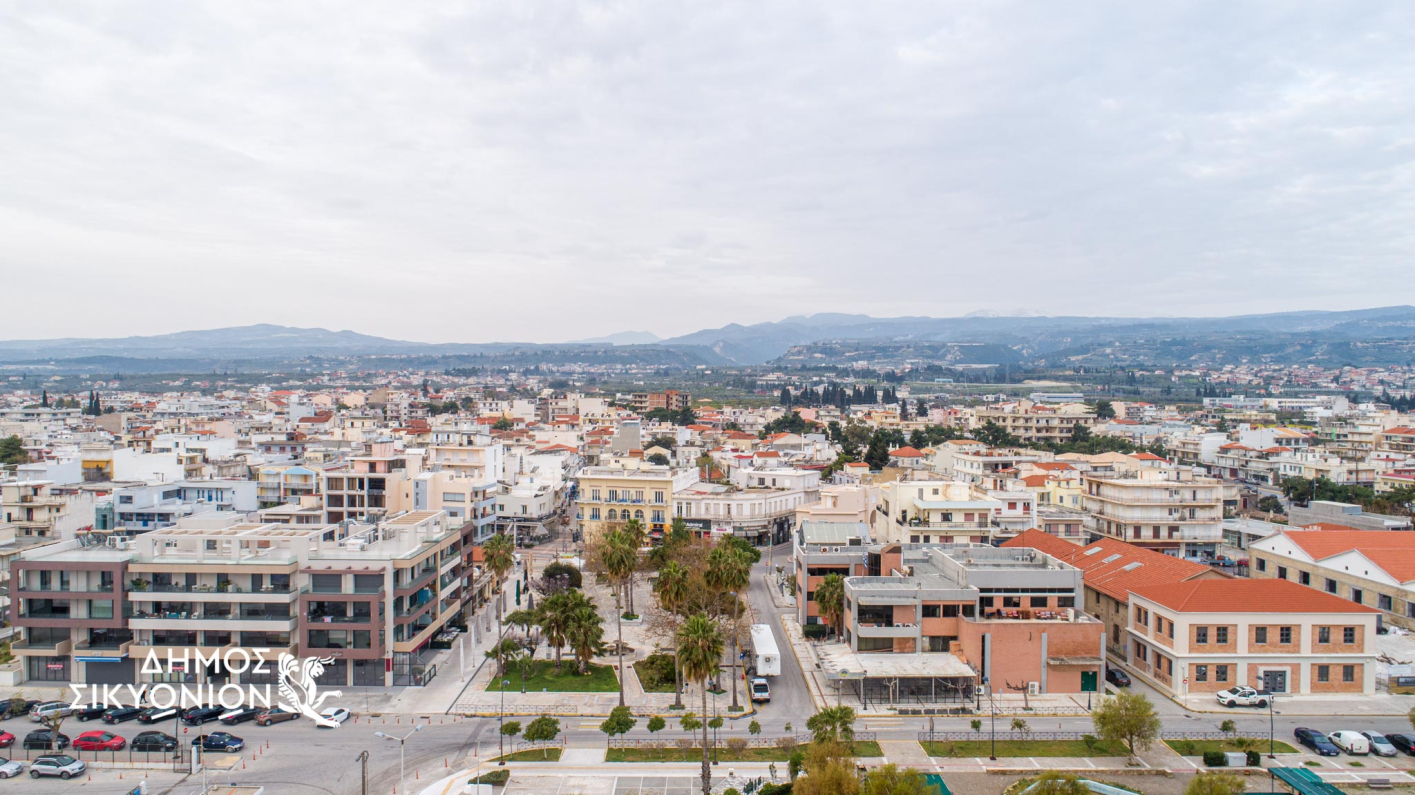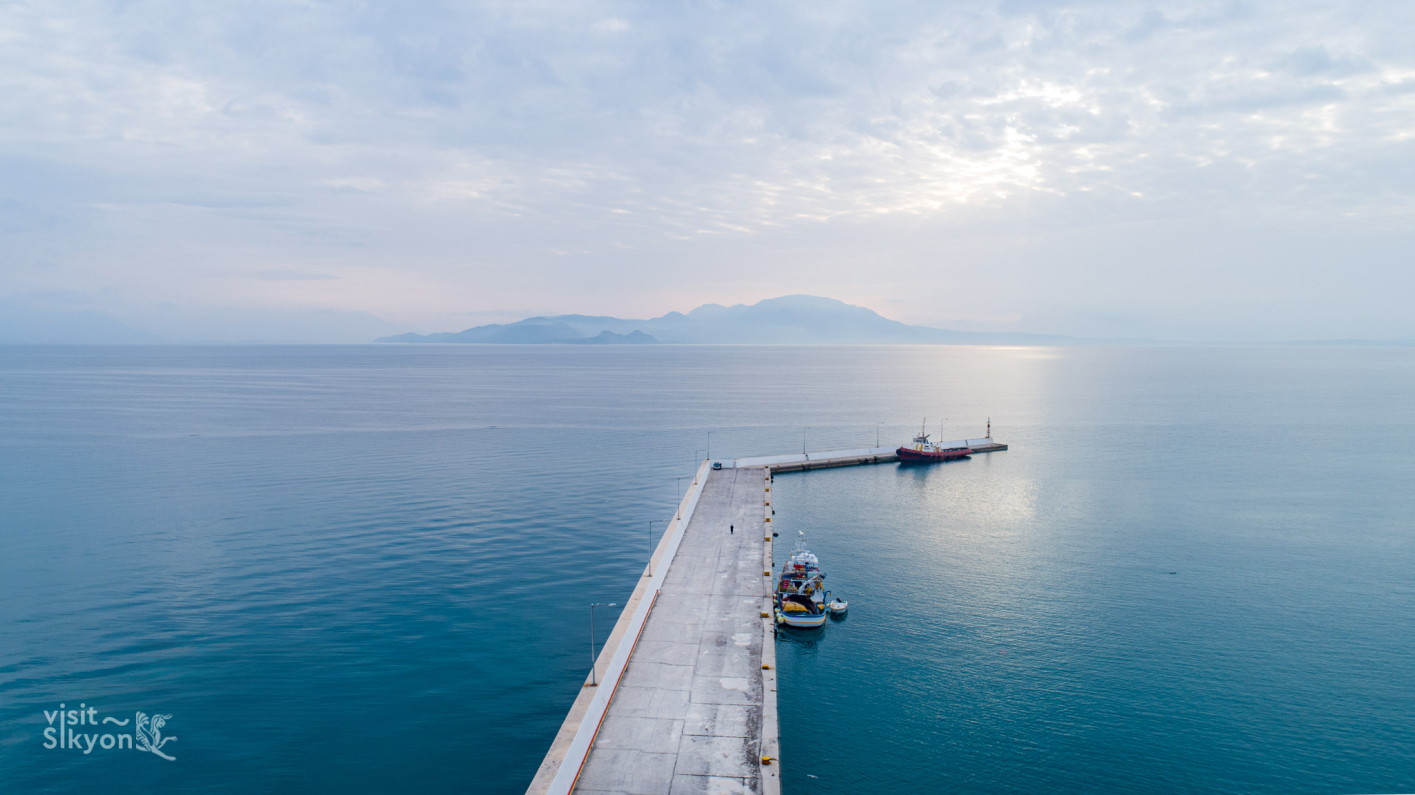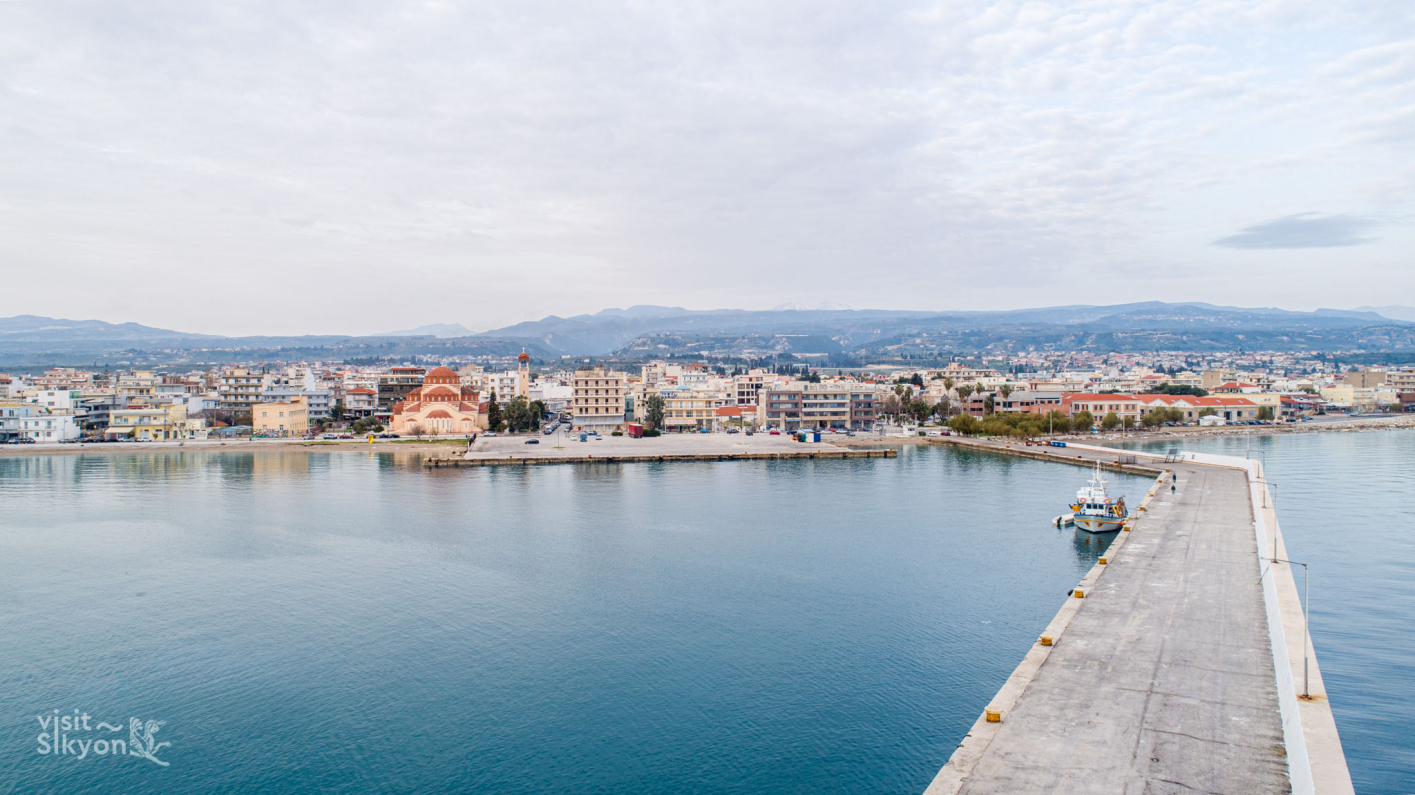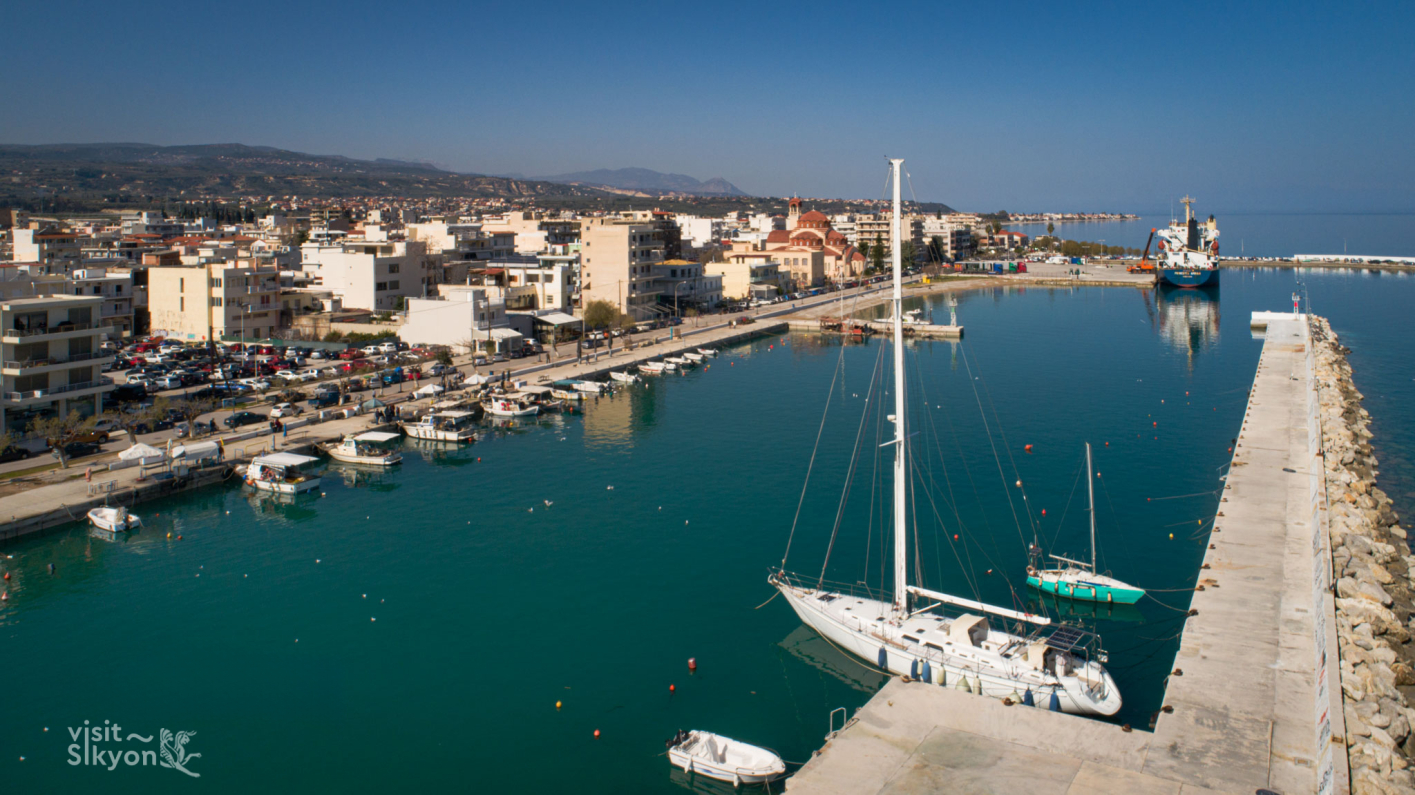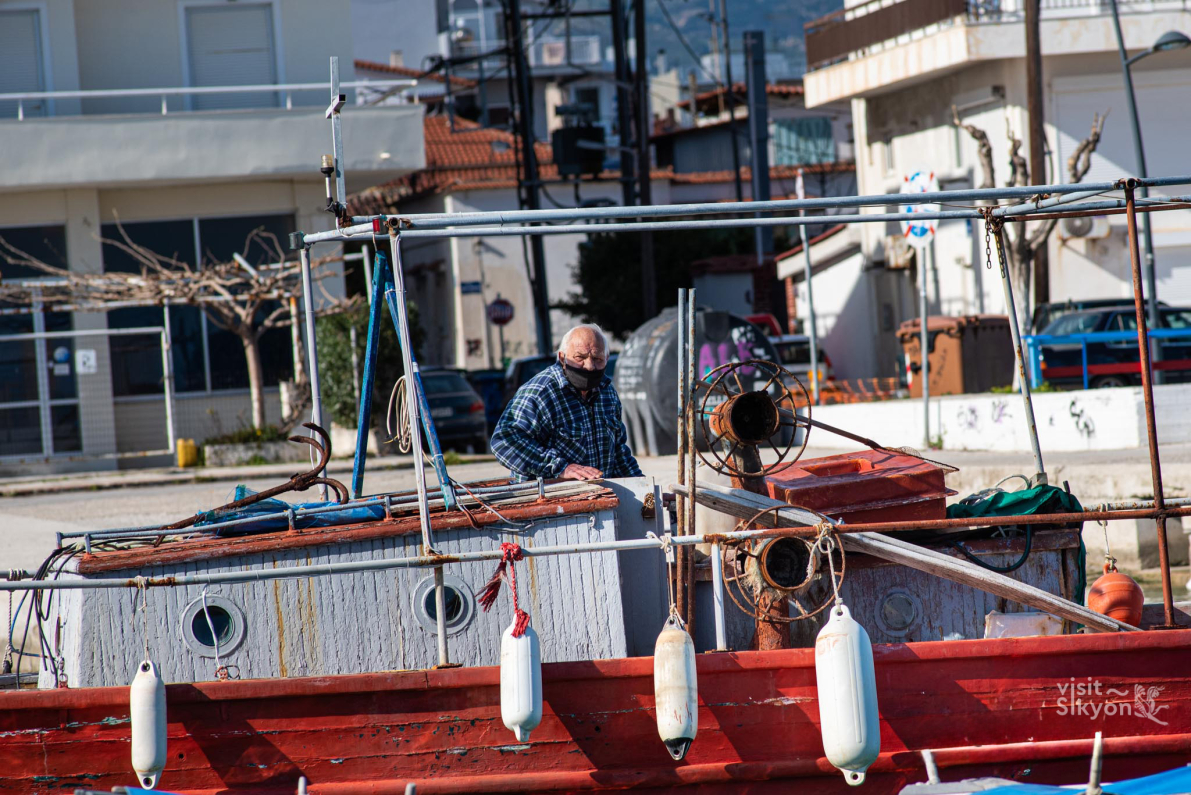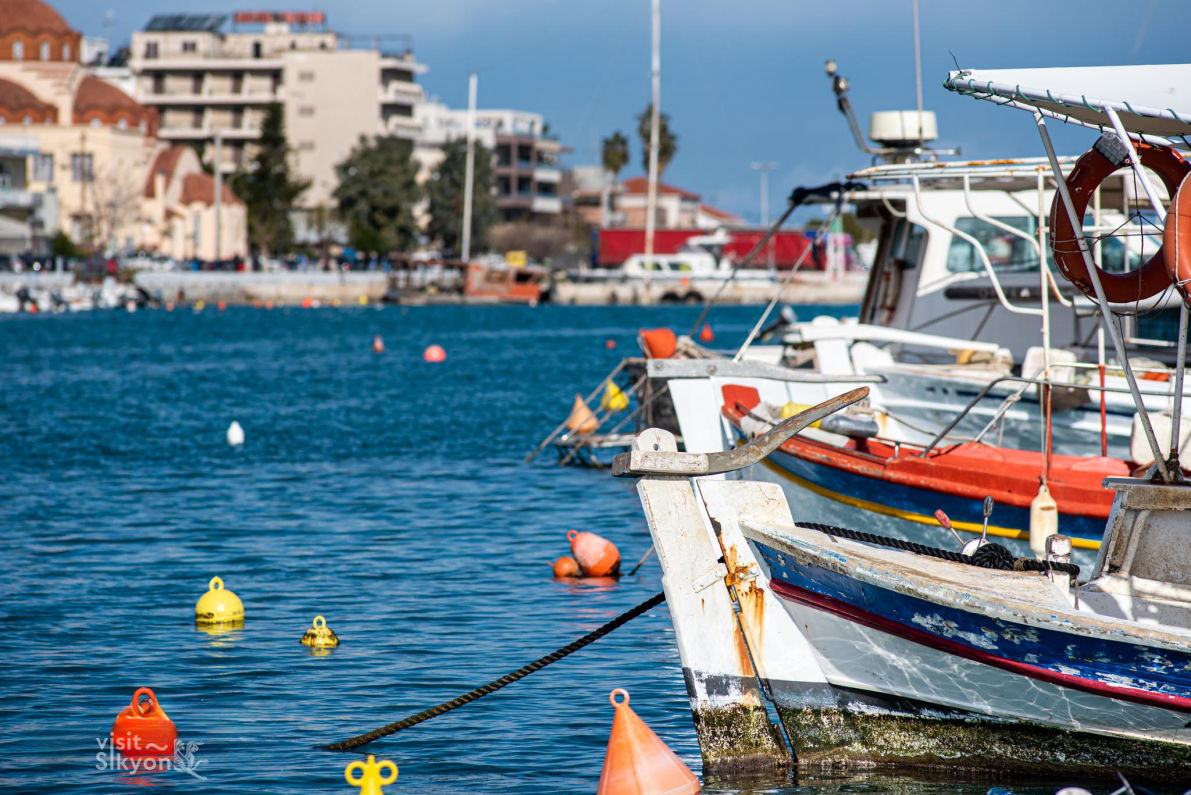Kiato
Kiato is a coastal town that stretches along the shores of the Corinthian Gulf, located 22 kilometers west of Corinth. The main urban area is situated between the mouths of two rivers and a stream, all closely linked to its history. The eastern entrance of the city is defined by the mouth of the mythical Asopus River, which carries the waters of Nemea and Stymphalia into the Corinthian Gulf. The center of Kiato, one of the busiest areas of the city, is crossed by the Elissonas River, historically connected to the ancient city of Sicyon. Just a little further west, the city's boundaries are defined by the Kyrillos stream.
Kiato gradually developed as a commercial center of the region after the Greek Revolution of 1821, as prosperous Greek families left their mountainous and transport-challenged villages and moved towards the sea, seeking easier routes for trade, mainly for raisins. This "movement" of populations towards the lowlands is considered by some historical researchers to be the origin of the city's current name "Kiato." One of the most notable families that settled in Kiato during that time was the family of the later Prime Minister of Greece, Sotirios Krokidas. According to several historical sources, the city's current cathedral, the Holy Church of the Transfiguration of the Savior, owes its name to a vow made by the father of the young Sotiris, who would go on to become one of the most important political figures of modern Greece.
Kiato grew significantly in the late 19th century, particularly during the interwar period when the raisin trade flourished. At that time, the city's port was established, along with grand complexes of raisin storage warehouses, later known as ASO, which dominate two central locations in today's Kiato. In fact, the building complex located to the west of the current town hall and Freedom Square has been restored and is hosting or will host cultural and educational institutions such as the Museum of Replicas of the ancient Sicyonian sculptor Lysippus, the Municipal Library, the new Municipal Theater, a Conference Center, Exhibition and Arts spaces, and more.
Kiato is richly endowed by nature: The clear and turquoise waters of the Corinthian Gulf create a network of small and larger beaches literally at the city's feet. The coastal promenade, which stretches for several kilometers, is perfect for a walk next to the sea breeze, all year round.
On the other hand, Kiato offers a rich variety of entertainment and activities for even the most demanding visitors. The city is centrally located in the Corinthia region, with easy access to significant attractions and winter activity centers both within and outside the municipality of Sikyonia. The mountainous Corinthia, with the fairy-tale villages of Feneos and Stymphalia, is just an hour's drive away. Moreover, access to important archaeological sites such as Ancient Nemea, Ancient Sicyon, or Ancient Corinth is easy, just a few kilometers away.
The nightlife in the city, especially during the summer months, resembles that of an Aegean island, with the large pedestrian street to the west of the city, next to the beach, lined with shops, restaurants, and bars. The lights, music, and atmosphere create a unique sense of relaxation and carefree living, just 100 kilometers from Athens.
Access to Kiato is easy, as it is served by KTEL buses from Athens every hour and from Corinth every half hour. There is also a suburban railway station with hourly connections from Athens. The town is connected to the major highway axis of Patras-Athens-Thessaloniki via the Olympia Odos, which offers direct access to Kiato via its namesake junction. From the Kiato railway station, there is also a bus connection to Patras.
